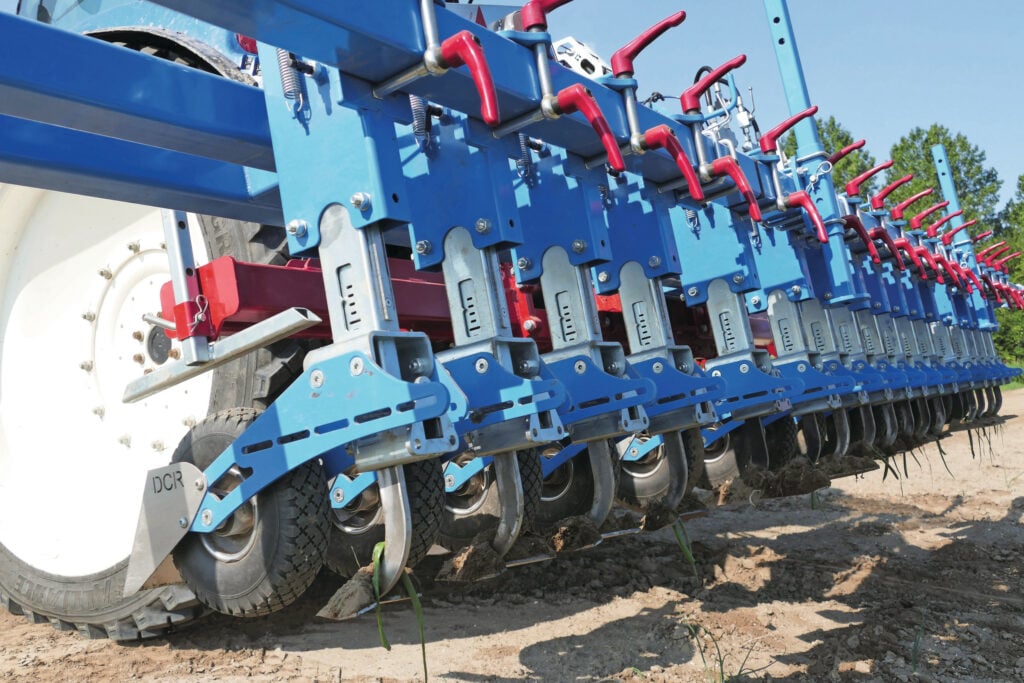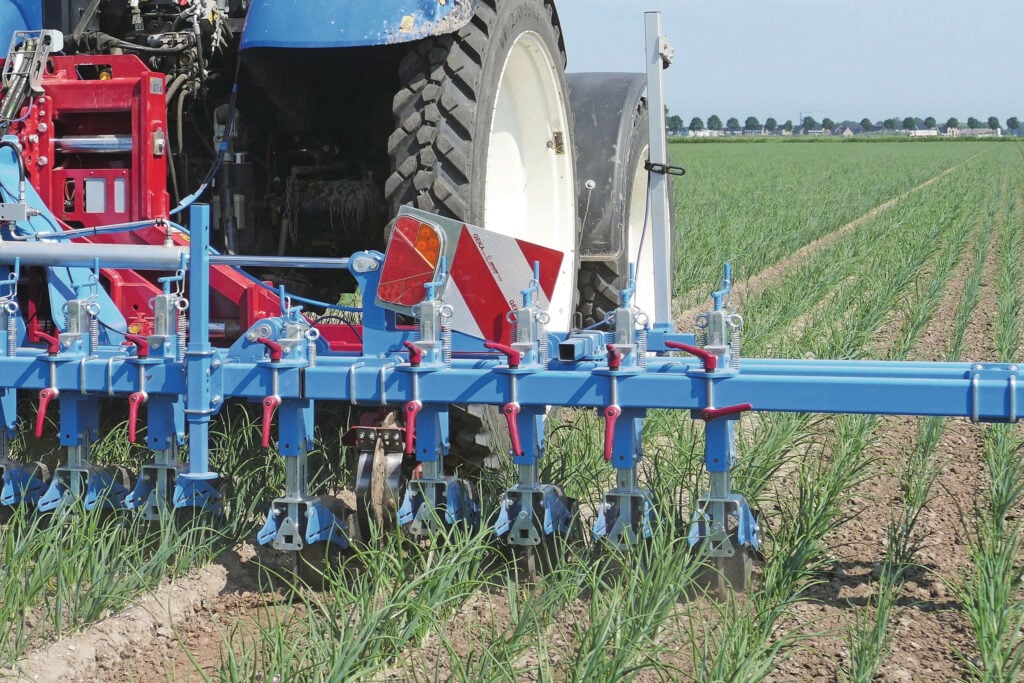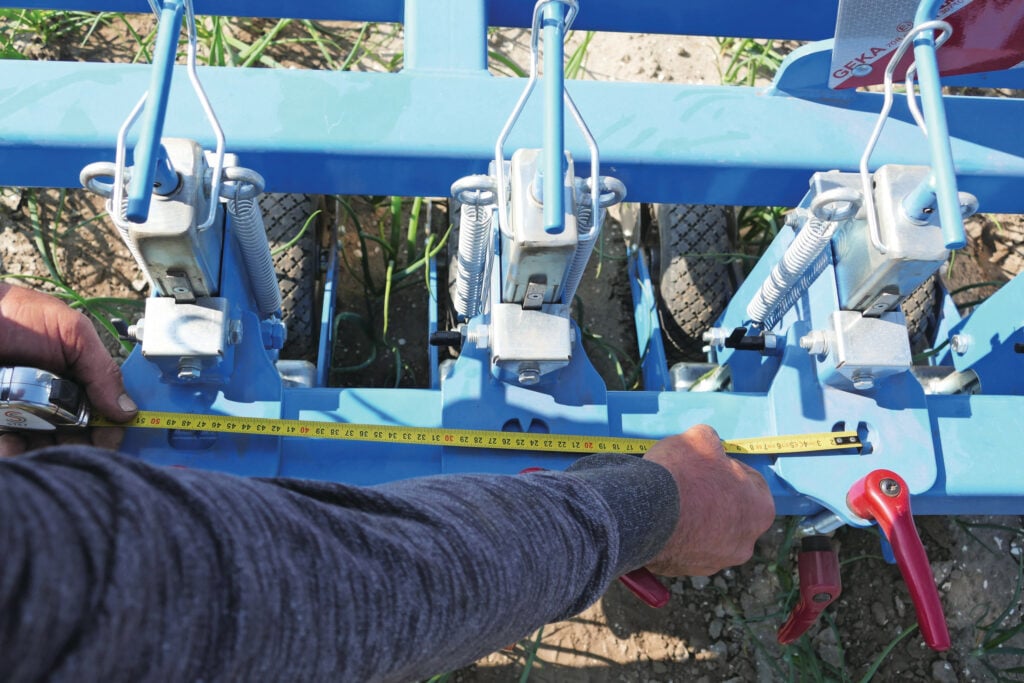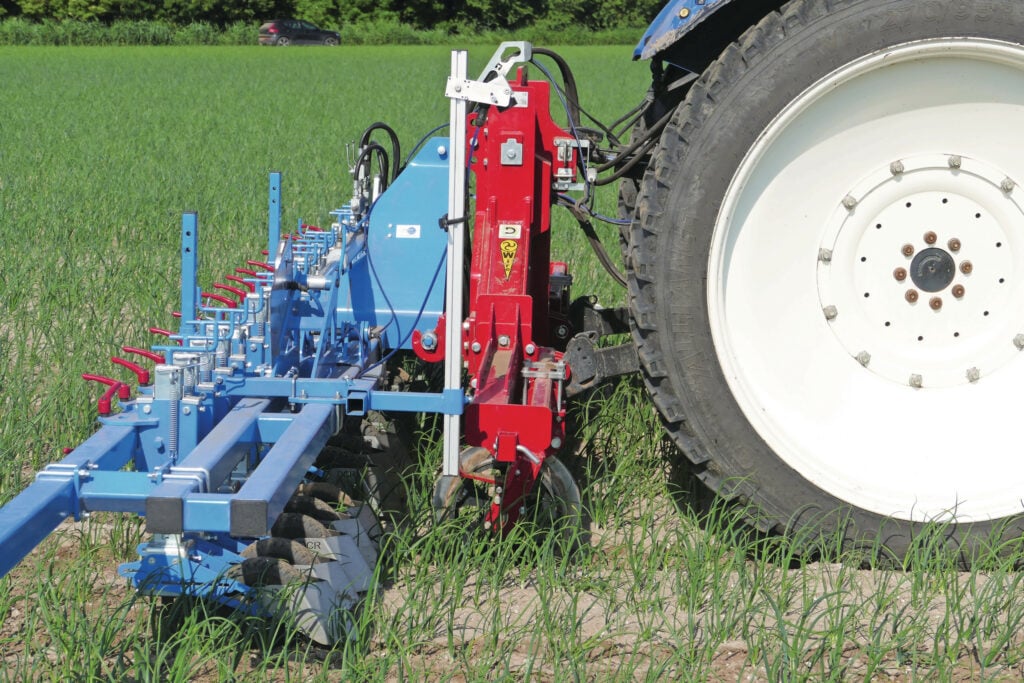DCR hoe bar: compact, light and solid

Arjan Doggen worked for more than 10 years on perfecting his ideal hoe. Now that it is ready for the market, he sought cooperation with Wifo for series production and market introduction. The Dutch agricultural titel Boerderij observed this concept in practice.
Compact, light, easy to adjust, and as little susceptible to wear as possible. Those were the four starting points when Arjan Doggen assembled his first self-designed hoe approximately 12 years ago. After gaining several years of experience and making improvements, the design has been developed enough for about 5 or 6 years now to bring the DCR hoe to the market. DCR stands for Doggen Constructie & Reparatie (Construction & Repairs, ed.).
Since 2022, Wifo has been offering a camera-controlled sideshift for hoes on the market. This year, the company started a collaboration with Doggen. Although the hoe is still being further developed, the design is ready to serve a large customer base.
Vertical and compact
Doggen deliberately did not opt for parallelograms, but for vertically moving coulter holders. This is a familiar, although not widely used, concept. However, it is compact and relatively light to construct. Doggen: “On my own farm, I had worked for years with an older conventional hoe with parallelograms. Unavoidably, some play started to develop, making hoeing less accurate. You cannot adjust that afterwards, which convinced me that a parallelogram is not the ideal solution.”
The vertically moving coulter holders are supported on eight bearings, and the entire construction is designed so that the play can be adjusted in all directions. In practice, it turns out that a new hoe is adjusted once, and then there is almost no need to look at it again. The coulter holders are pressed onto the ground with spring tension. This pressure cannot be adjusted, but it can in principle be changed by fitting other springs. The working depth of the blade is set with a spindle on top. On the side of the box section, which functions as the coulter holder, slots have been milled that serve as a scale.

Much has been improved in detail over the years, but the principle has remained unchanged. The large number of red levers is striking: the coulter holders are mounted in clamps on a square box section and are now provided with nuts with a substantial lever, which allows the clamp to be repositioned without tools if necessary. A cut-out point indicates the exact centre. Doggen is considering milling lines into the box section for fixed measurements. This makes adjustment even easier. In onions, this may be convenient for contractors who work with different row spacings. Furthermore, it is often a one-time adjustment in practice.

Attachments
Future Farming’s Dutch sister title Boerderij observed the hoe at work in seeded onions with a single goosefoot per element. At this point, there are many options in terms of configuration. A combination with discs as leaf guards is possible. This is relevant when the crop is small and the soil on top is hard.
A set of wing shares can be mounted as an alternative. For crops with a wider row spacing, such as beet, a combination of three goosefeet is possible. The coulter holder is prepared for mounting additional implements. Some of these are still under development. Think, for example, of finger weeders or torsion weeders.
The machine we saw at work was fitted with leaf guards on the support wheels. This is an option often chosen for onions. The guards are made of stainless steel; the other silver-coloured parts are electroplated. The paintwork is powder coating.

No section control yet
The development of the DCR hoe originated from a customer base in the Dutch region of Noordoostpolder, with seeded onions as a main focus. But now that the customer base is expanding, the number of applications and customer requirements will also increase. A 6.75 metre wide, foldable bar is the most commonly sold base. Depending on bed widths and sowing systems, a wide customer base can be served.
On predominantly square fields, section control has limited added value, but on angled fields, it is becoming a popular option. This is not yet available on the DCR hoe, but it is a point of attention. Such an option would immediately make the hoe much heavier and more expensive.
The DCR hoe can be supplied in combination with the Wifo-camera control both for front and rear mounting. Mounting in the rear linkage is common with a 6 metre working width, but because the hoe is relatively light, 6 metres can also be used well in the front linkage.

Distinctive in the market
The number of manufacturers of hoes can no longer be counted on two hands. The hoes all perform the same function, but it is remarkable to see how each manages to develop their own construction.
Doggen has certainly succeeded in bringing an original design to market, with a compact build and relatively low weight that will appeal to many users. The hoe was developed from practical experience in a region with many onion growers and organic growers, with their specific requirements. On the other hand, the small scale also makes it possible to accommodate many customer-specific wishes.